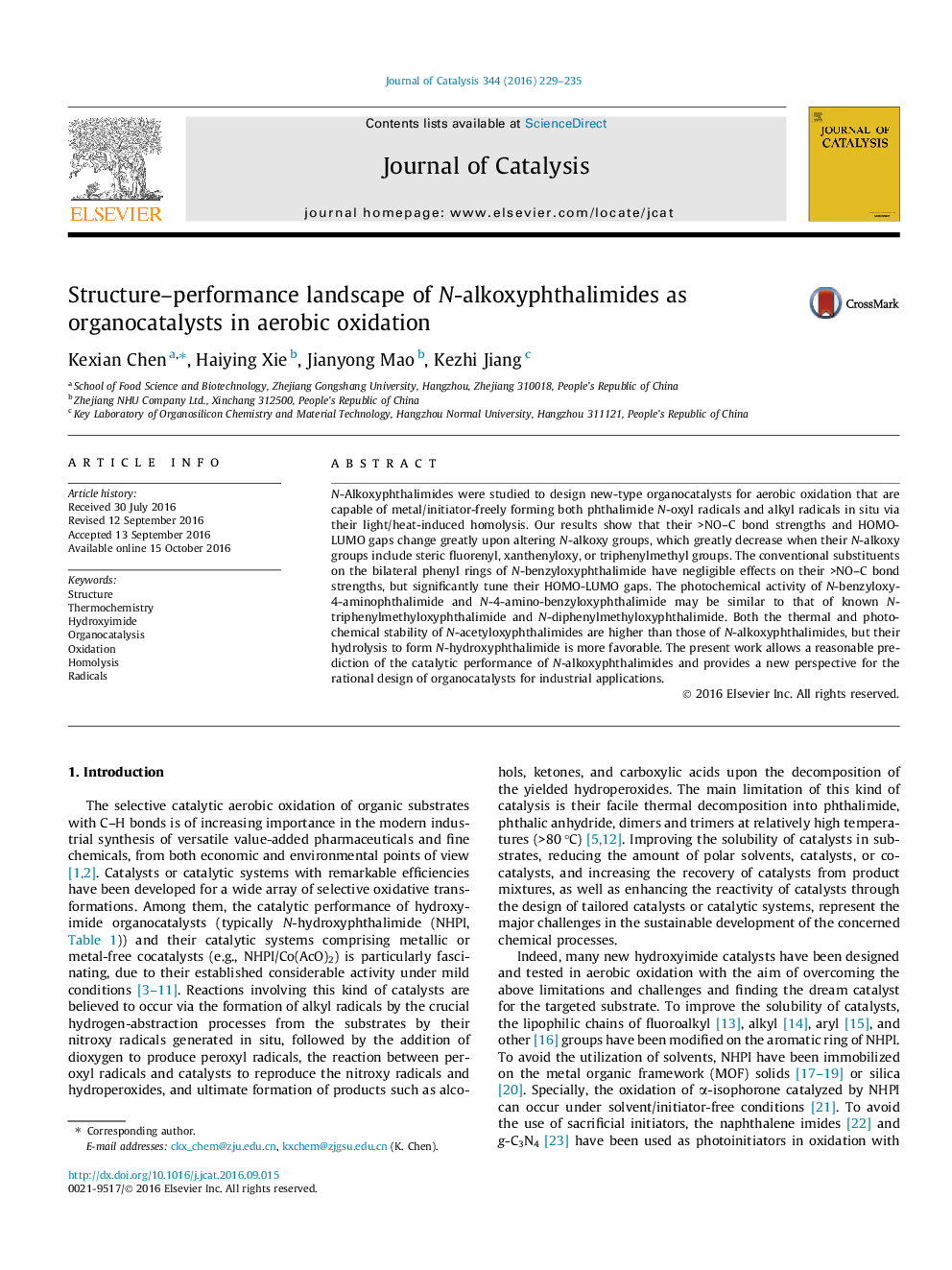| Article ID | Journal | Published Year | Pages | File Type |
|---|---|---|---|---|
| 6455787 | Journal of Catalysis | 2016 | 7 Pages |
â¢Structural and thermochemical properties of N-alkoxyphthalimides were studied.â¢Their thermal homolysis over 100 °C favors their industrial catalytic oxidation.â¢N-alkoxy groups are powerful in adjusting both >NO-C bond strengths and HOMO-LUMO gaps.â¢The potential photochemical homolytic orders of N-alkoxyphthalimides are proposed.â¢Unlike N-acetyloxy cases, hydrolysis of N-alkoxyphthalimides would be very difficult.
N-Alkoxyphthalimides were studied to design new-type organocatalysts for aerobic oxidation that are capable of metal/initiator-freely forming both phthalimide N-oxyl radicals and alkyl radicals in situ via their light/heat-induced homolysis. Our results show that their >NO-C bond strengths and HOMO-LUMO gaps change greatly upon altering N-alkoxy groups, which greatly decrease when their N-alkoxy groups include steric fluorenyl, xanthenyloxy, or triphenylmethyl groups. The conventional substituents on the bilateral phenyl rings of N-benzyloxyphthalimide have negligible effects on their >NO-C bond strengths, but significantly tune their HOMO-LUMO gaps. The photochemical activity of N-benzyloxy-4-aminophthalimide and N-4-amino-benzyloxyphthalimide may be similar to that of known N-triphenylmethyloxyphthalimide and N-diphenylmethyloxyphthalimide. Both the thermal and photochemical stability of N-acetyloxyphthalimides are higher than those of N-alkoxyphthalimides, but their hydrolysis to form N-hydroxyphthalimide is more favorable. The present work allows a reasonable prediction of the catalytic performance of N-alkoxyphthalimides and provides a new perspective for the rational design of organocatalysts for industrial applications.
Graphical abstractDownload high-res image (111KB)Download full-size image
